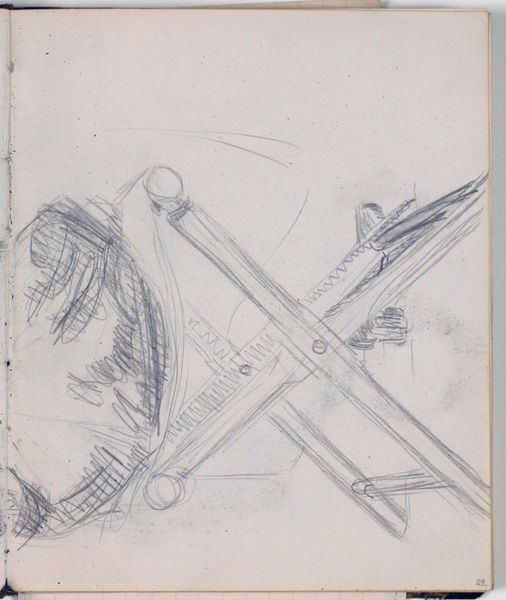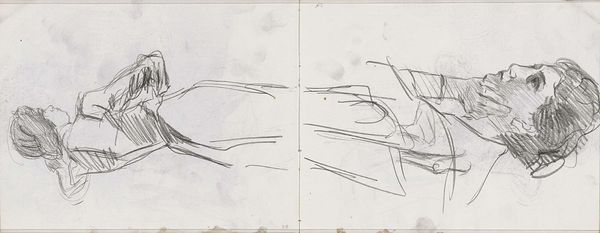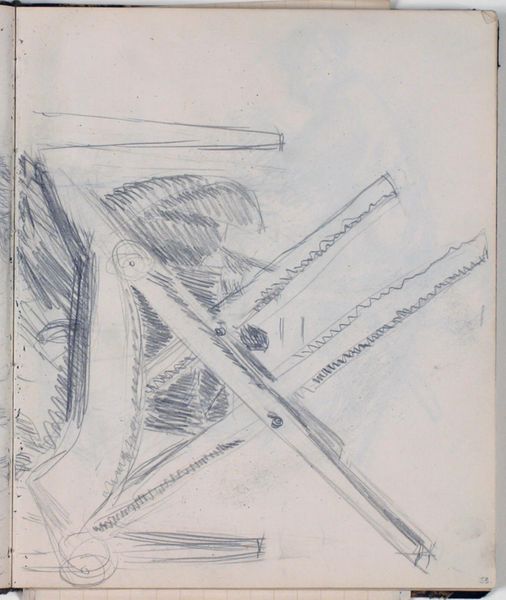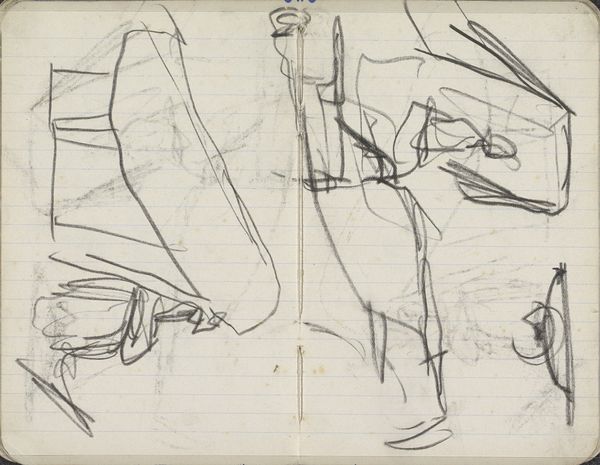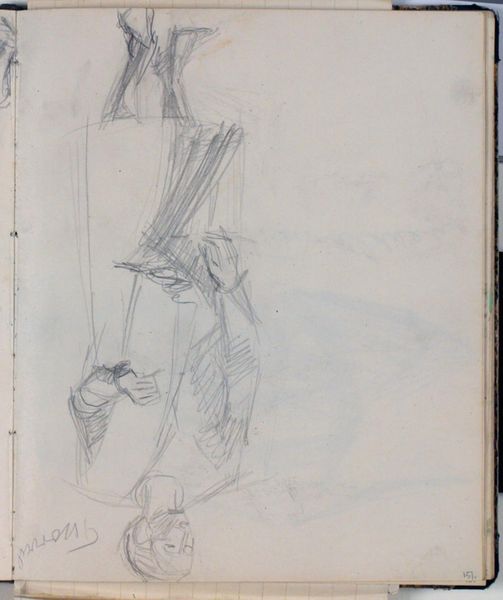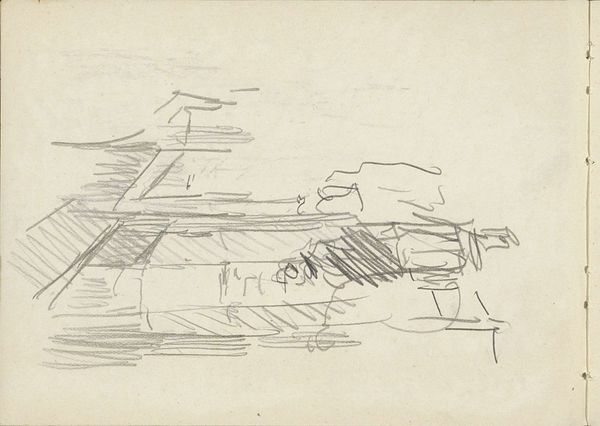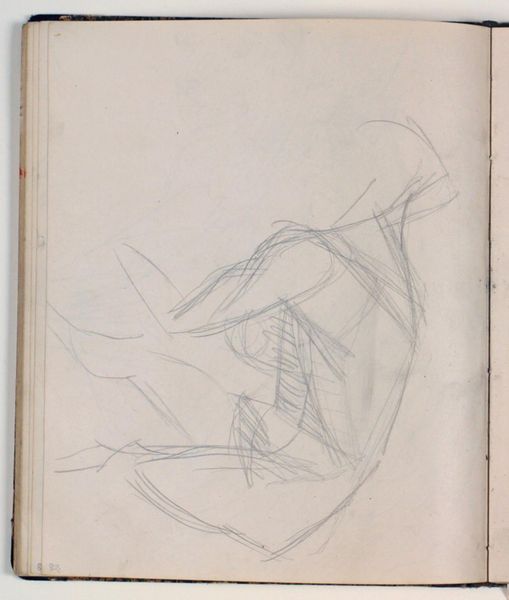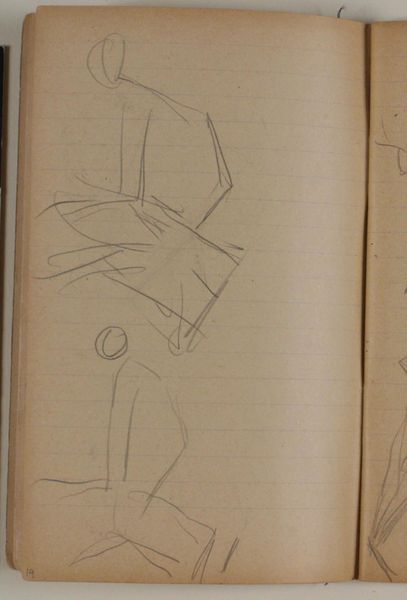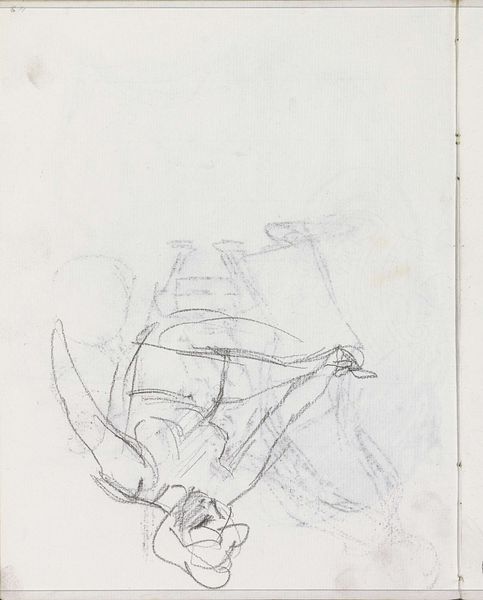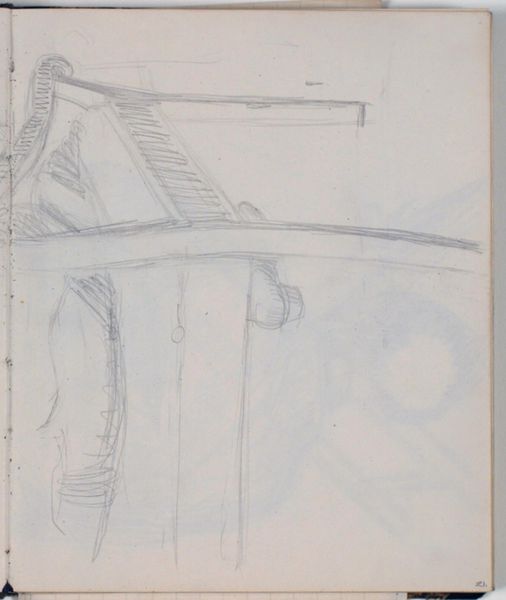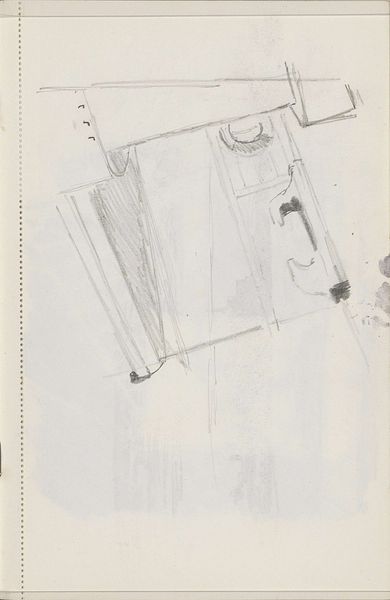
Studie af rygvendt mand siddende i en klapstol 1930 - 1936
0:00
0:00
drawing, pencil
#
drawing
#
figuration
#
pencil
#
modernism
Dimensions: 226 mm (height) x 185 mm (width) x 112 mm (depth) (monteringsmaal), 221 mm (height) x 184 mm (width) (bladmaal)
Curator: Let’s spend a few moments looking at “Studie af rygvendt mand siddende i en klapstol,” or “Study of a man sitting in a folding chair seen from the back” by Niels Larsen Stevns, likely created between 1930 and 1936. It’s a pencil drawing currently held here at the SMK. What are your first thoughts? Editor: Hauntingly transient. Those rapid pencil lines – are they a kind of portrait of ephemerality? The emptiness speaks louder than any detailed rendering could. Curator: I find it interesting that you zero in on ephemerality. Considering the time period, with the rise of industrial production and the changing nature of labor, Stevns' choice of such a readily available, foldable object raises questions about functional design, production, and its effects on our lives. Editor: Oh, totally! It makes me think of Beckett – waiting, the banality of objects amidst existential questioning. Was Stevns capturing a quiet unease through something so quotidian? Curator: Perhaps. His use of line, the quick strokes creating volume, invites us to think about the chair's availability—its mass-produced quality making this experience accessible. Was he thinking of the person, or of what kind of culture allowed a moment such as this? Editor: Or, dare I say, the disposable nature of modern life creeping in? The lightness of the pencil itself—is that another layer? Fleeting, like the pose of the sitter himself? Curator: Exactly! I agree—each hasty sketch and the accessibility of pencil as medium further blur the lines between work and art, between mass production and personal expression. The sitter remains elusive; what is shown, the back of his head, is really the opposite of connection or insight. Editor: A moment of observation, filtered through layers of social observation… The beauty in the starkness then resides not just in its technique but in what that simple arrangement says about existing in a certain space, at a particular time. So very true. Curator: Precisely. It pushes beyond a portrait to explore art as the residue of culture, with an eye always on the materials themselves, no? Editor: Absolutely. After really sitting with this piece, it definitely asks questions of how everyday items frame not only the individual figure but the cultural values they represent.
Comments
No comments
Be the first to comment and join the conversation on the ultimate creative platform.

